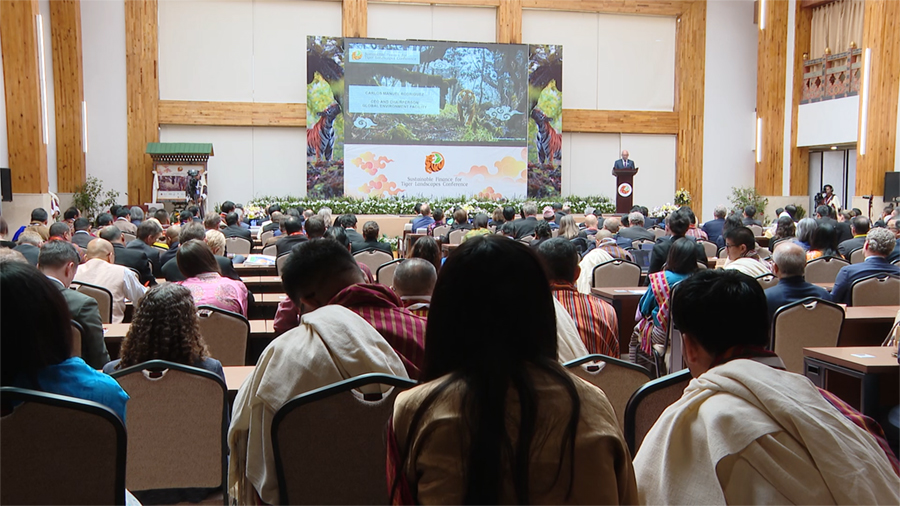
The USD 1bn fundraiser launched during the two-day Sustainable Finance for Tiger Landscapes Conference in Paro yesterday will ensure a sustainable source of funds to preserve the tigers. The fund which will be raised within 10 years from now will be independent from the current grant-based fund for tiger conservation. The fund is expected to benefit the 13 tiger-based countries including Bhutan.
During the conference, experts revealed that as of now, the world has around 4,500 tigers, which is a significant increase compared to 2010.
Subsequently, there is an increasing need for sustainable funds, which is crucial for tiger conservation.
“We can’t be held in a situation where grant-based conservation is the only way forward. One-year grants, three year grants, then with a change in government, suddenly all our tiger conservation efforts end. We need to tap into sustainable, new and innovative sources of finance that’s going to give us a platform to take all the lessons that we have for tiger conservation forward, not just for the next decade, but for the next 20, 30 years and to continue,” said Stuart Chapman, Chair of Tiger Conservation Coalition.
He added the amount was fixed at USD 1bn as the tiger-range countries were facing a shortfall of USD 137 M in tiger conservation efforts in 2022 according to a study.
The fund will be raised from new donors and will be divided among 13 tiger-based countries depending on the opportunities for conservation efforts, along with the country’s political alignment, landscape and context on tiger conservation.
The conference is not only to raise fund but also to discuss and come up with innovative methods through collaboration for the conservation of tigers.
While discussing about the building of resilience of communities to withstand human-wildlife conflict, the director of the forests and park services department shared that Bhutan is moving forward to a community-based approach, contrary to the tiger-centric method adopted in the past.
“So now, we have policies and programmes that are coming up about how they work together and in one case, that I could see was in the previous some were hunters. Now there is a programme called hunter-hermit change. So, that’s how these hunters have now turned into conservationists. There are so many programmes we have planned,” said Lobzang Dorji, Director of Department of Forests and Park Services.
He added that the Nu 1 M given to each gewog to compensate farmers who had lost their cattle to tigers was either too little in some gewogs or more than enough in a few. The amount was given as a part of the Gewog Tiger Conservation Scheme to 12 gewogs in the country to compensate financial losses incurred by local communities when cattle are killed by tigers.
According to Trongsa’s Nubi Gup, the gewog has been struggling the most with human-wildlife conflict in the country and there is a need for more funds to support them.
She added that about 300 cattle were lost to human-wildlife conflict since 2018.
“Till now, we have received support but more needs to be done. With the increase in number of tigers, conservation efforts and mechanisms will depend on better funding. Better support will also ensure that tiger conservation messages are relayed to more people,” said Pema Lhamo, Nubi Gup.
During the two-day conference, foreign delegates from Bangladesh, Cambodia, China, India, Indonesia, Kazakhstan, Malaysia, Nepal, Thailand, and Vietnam, which are all tiger-range countries also presented their agenda and progress on tiger conservation and financing.
Singye Dema
Edited by Tshering Zam









